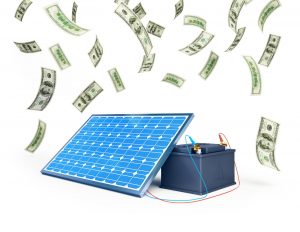If you are planning on going solar, you may be wondering if you should replace your roof before installing your solar energy system. Considering that your roof is one of the most expensive things a homeowner will replace, it’s a valid question. The answer to the question is dependant on two main factors: the lifespan and quality of your roof.
Roof Type
There are several common roof types in the US and each has its own lifespan. The lifespan of your roof is one of the most important factors when you are preparing for solar panels. Placing solar panels on a roof two years before the end of its lifespan can mean you have to unnecessarily spend money a couple of years down the road to remove and reinstall your panels when you get a new roof. For an idea of what to expect, here are the most common roof types, along with their average lifespans.
Composite
According to roofing calc.com, composite roofs can last up to 50 years. This impressive lifespan makes composite roofing the ideal base for solar panels. Composite roofing is more expensive than asphalt shingles and comparable in cost to metal roofing. Composite shingles look similar to asphalt ones but are lighter and more durable. If you aren’t sure if you have a composite roof, ask a contractor to be certain.
Metal
Metal roofing lasts anywhere from 30-50 years. Metal roofs are easy to recognize with their distinct seamed shingles.
Asphalt
Asphalt shingles are the least expensive and most common roofing option for homes in the U.S. On average, they have a 25-year lifespan. They are generally dark in color with a grainy appearance. And compared to composite shingles, they are heavier.
Protect your investment
Knowing the lifespan of your roof will help you know if you should consider replacing your roof before installing your solar energy system. Solar panels have a lifespan of anywhere from 40-50 years. If you have a roof that is only a few years from the end of its projected lifespan, give some thought to replacing it before installing solar panels. The main reason for this is to save some money down the line. If you need to repair or replace your roof after going solar, you will first need to remove your panels, tend to the roof, and then reinstall the panels. Each of these steps requires days of contracted work. Installing your solar panels on a fairly new roof will save you money and time.
The quality of your roof
In the event your roof is new, the second thing to look at is its condition. Has your roof suffered damage from a storm? Are there overhanging trees that pose a threat or have caused damage already? Take care of these things before installing solar panels. Your roof is the base of your solar panels and you want this base to be in good condition before mounting your solar panels.
There are two ways to determine if your roof might need replacing before going solar. First, you may inherently know that the roof is near the end of its life. Second, when we do our site inspection, if the roof is not structurally sound, our site inspector may require that you replace the roof prior to moving forward with solar.
But, there is good news if your roof needs replacing. Aurora Energy has a program that allows a customer to replace their roof and go solar, all part of the same project and financing. If you replace your roof as part of going solar with Aurora, you are entitled to the 26% (2020) tax credit on both the solar AND the roof!
Curious about the durability of your solar panels? We’ve got a blog for that.
If you want more information on your roof, contact a local contractor you trust and have it inspected. And if you’re ready to move forward with a no-obligation solar energy system estimate, make an appointment with one of our expert consultants!




